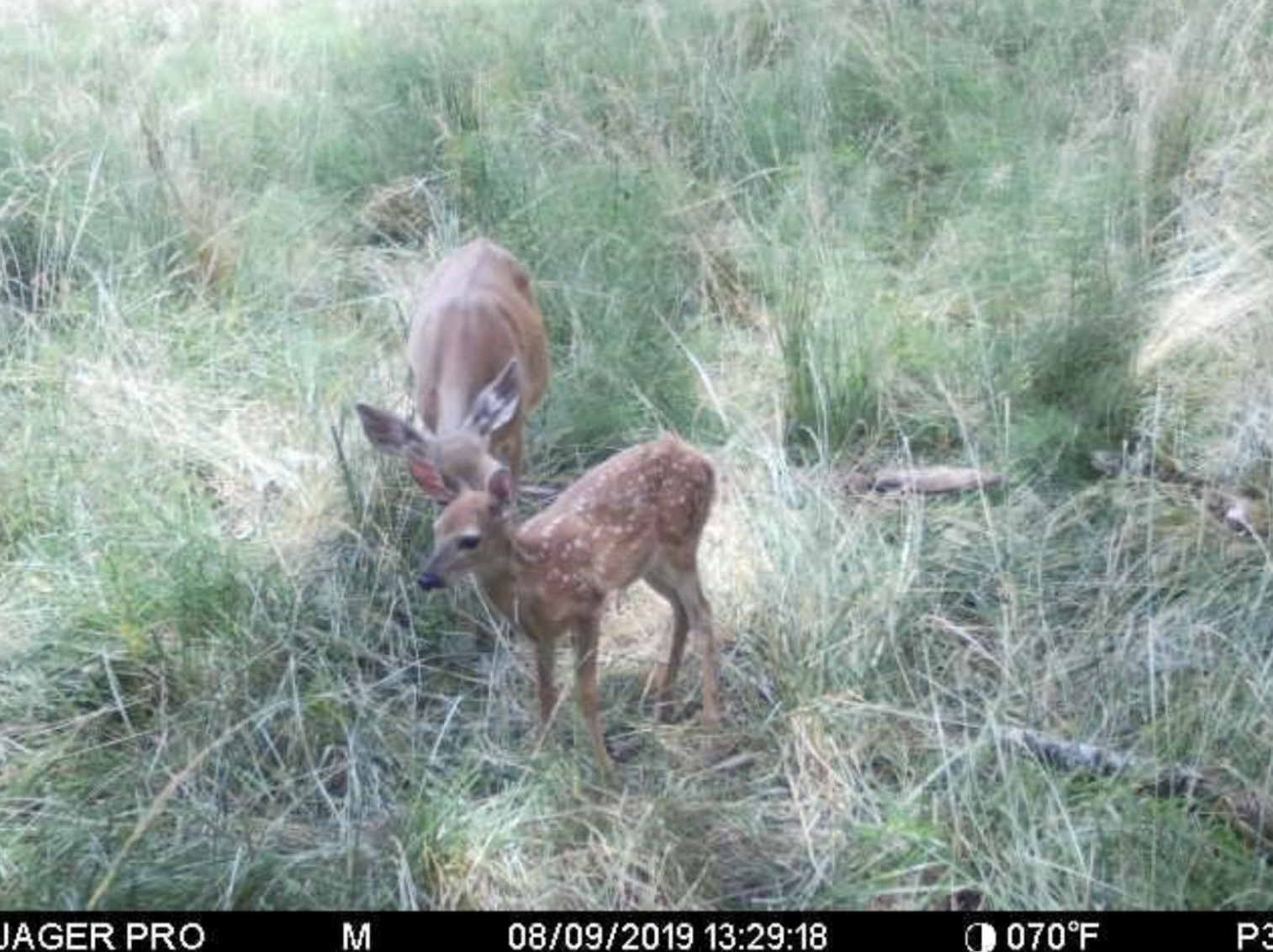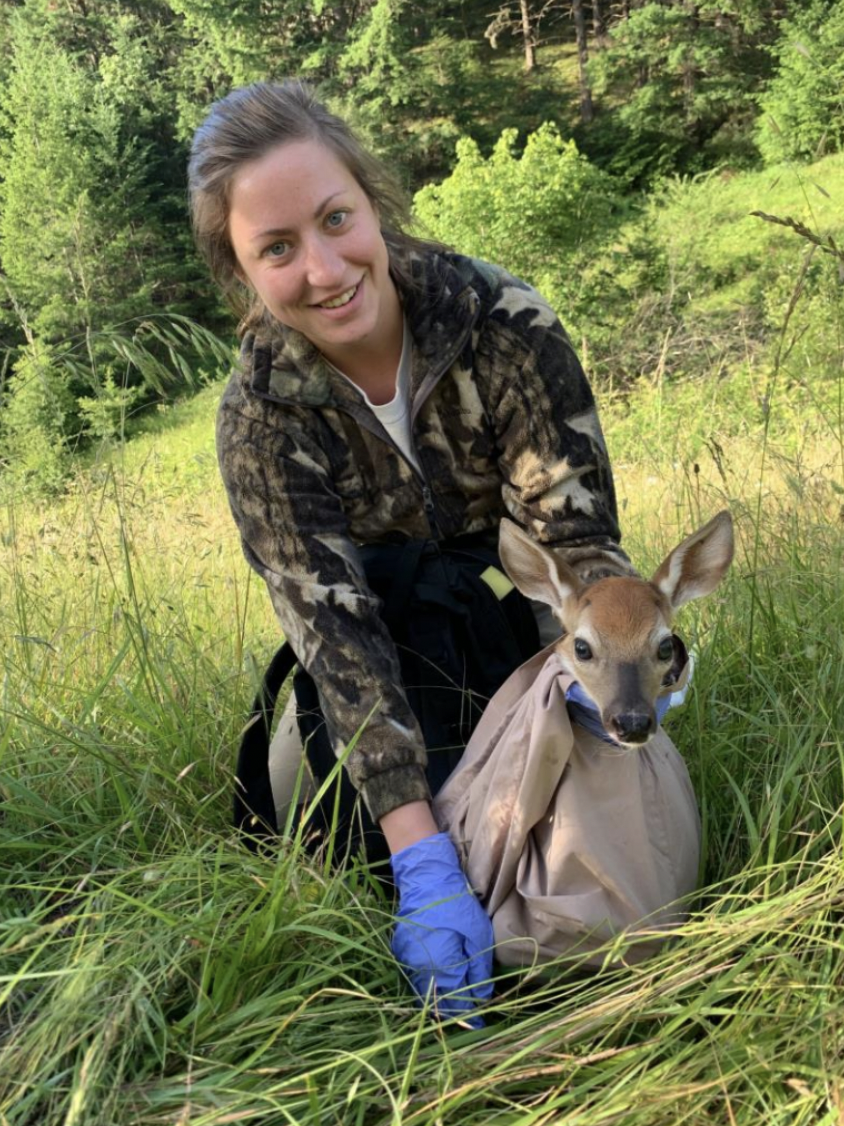Picture This: Researching With Cellular Cameras
Originally published October 21, 2019
Over the course of the spring and summer of this year, we have been working with the Oregon Department of Fish and Wildlife to help with their research on the mortality and movements of Columbian white-tailed deer.
We were able to provide the ODFW with equipment that was key to their research through a monetary award. ODFW used the funds they were awarded to purchase cellular cameras to place on top of both active and inactive traps in order to keep track of nearby doe and fawn pairs.
By providing a constant stream of activity, near and at the traps, the cameras allowed the ODFW research team to continue their work throughout the summer. Without the cameras, the research would have had to have been cut short.
An un-collared doe and fawn pair that are visiting a possible trap site | Photo: Oregon Dept. of Fish and Wildlife
Throughout the project, which ended in July, ODFW was able to trap and collar 18 fawns -- an increase of five from last year’s total. ODFW was also able to continue their work on trapping and darting does during the fall and winter seasons.
Research on the mortality of Columbian white-tailed deer is far from over for the ODFW but the cameras have allowed them to have more eyes on the forest and have more opportunities to trap, collar, and track deer after their release.
Whatever it is, the way you tell your story online can make all the difference.
Tessa Franklin (Research Technician) with a captured fawn that was spotted from the opposite ridge; fawns are initially put into pillow cases to be weighed, then collared, then released. Nitrile gloves are always worn to avoid transferring extra scent from the research team to the fawns. | Photo: Oregon Dept. of Fish and Wildlife
Do you want to help the Oregon Department of Fish and Wildlife do more research and help create a better future for Oregon’s wildlife? Please consider making a donation to the Oregon Wildlife Foundation, so we can help fund more projects and research.


